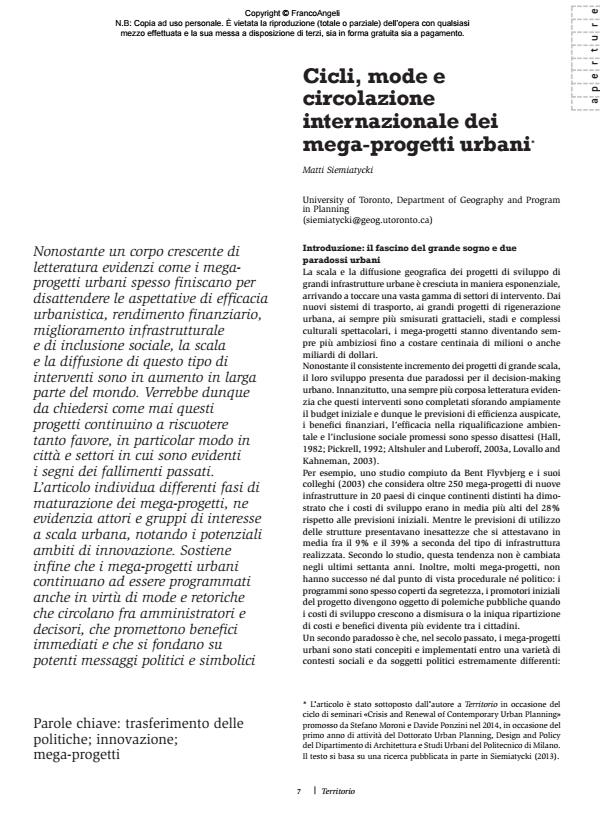Cicli, mode e circolazione internazionale dei mega-progetti urbani
Titolo Rivista TERRITORIO
Autori/Curatori Matti Siemiatycki
Anno di pubblicazione 2015 Fascicolo 2014/71
Lingua Italiano Numero pagine 9 P. 7-15 Dimensione file 824 KB
DOI 10.3280/TR2014-071001
Il DOI è il codice a barre della proprietà intellettuale: per saperne di più
clicca qui
Qui sotto puoi vedere in anteprima la prima pagina di questo articolo.
Se questo articolo ti interessa, lo puoi acquistare (e scaricare in formato pdf) seguendo le facili indicazioni per acquistare il download credit. Acquista Download Credits per scaricare questo Articolo in formato PDF

FrancoAngeli è membro della Publishers International Linking Association, Inc (PILA)associazione indipendente e non profit per facilitare (attraverso i servizi tecnologici implementati da CrossRef.org) l’accesso degli studiosi ai contenuti digitali nelle pubblicazioni professionali e scientifiche
Nonostante un corpo crescente di letteratura evidenzi come i mega-progetti urbani spesso finiscano per disattendere le aspettative di efficacia urbanistica, rendimento finanziario, miglioramento infrastrutturale e di inclusione sociale, la scala e la diffusione di questo tipo di interventi sono in aumento in larga parte del mondo. Verrebbe dunque da chiedersi come mai questi progetti continuino a riscuotere tanto favore, in particolar modo in città e settori in cui sono evidenti i segni dei fallimenti passati. L’articolo individua differenti fasi di maturazione dei mega-progetti, ne evidenzia attori e gruppi di interesse a scala urbana, notando i potenziali ambiti di innovazione. Sostiene infine che i mega-progetti urbani continuano ad essere programmati anche in virtù di mode e retoriche che circolano fra amministratori e decisori, che promettono benefici immediati e che si fondano su potenti messaggi politici e simbolici Parole chiave: trasferimento delle politiche; innovazione; mega-progetti
- New Methods for Studying Transnational Architecture and Urbanism: A Primer Davide Ponzini, Fabio Manfredini, in TERRITORIO 80/2017 pp.97
DOI: 10.3280/TR2017-080015
Matti Siemiatycki, Cicli, mode e circolazione internazionale dei mega-progetti urbani in "TERRITORIO" 71/2014, pp 7-15, DOI: 10.3280/TR2014-071001